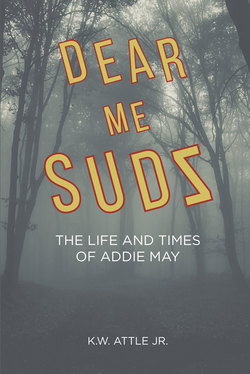Читать книгу Dear Me Sudz: The Life and Times of Addie May - K.W. Attle Jr. - Страница 7
На сайте Литреса книга снята с продажи.
ОглавлениеChapter 1
The Historical Events
“The president’s been shot, the president’s been shot. Extra, Extra, read all about it,” screamed the newsboy as he swung the freshly printed newspaper high in the air. It was July 2, just four months since his inauguration and less than twenty years since Pres. Abraham Lincoln was shot to death as he watched a play in the Ford Theater. Quickly a large crowd formed around the newsboy eager to get a copy of the latest edition. “What happened?” several of those passing by inquired. They say, “Garfield’s been shot.” When, where, how? One reader answered, “This morning at the Baltimore & Potomac Railroad Station in Washington DC.”
1881, a year of turmoil. Russian Czar Nicholas II was assassinated on March 13. Billy the Kid was arrested and put in jail. He escaped by killing two Deputies, James Bell and Robert W. Ollinger on April 18. On July 14, he was killed by Sherriff Pat Garrett. The river boat Princess Victoria sank in the Thames River killing 180 souls on April 11. “Four Dead in Five Seconds Gunfight” was the headline of April 14. Marshall Dallas Stoudenmire of El Paso, Texas, accounted for three of the four deaths: Ochoa, an innocent bystander of Mexican descent, former Town Marshall George Campbell, and John Hale. The fourth, Constable Krempeu, was shot by John Hale. The New York Times of June 21 reported Marie Laveau a.k.a. “The Voodoo Queen” of New Orleans died last Wednesday. At the Washington DC train station, President Garfield was shot on July 2, leaving the nation in distress till September 19 when he died and Chester Authur was sworn in as the twenty-first president of the United States of America. The assassin, Charles J. Guiteau, went on trial on September 14 for the killing of Garfield. Later upon conviction, he was hanged in the District of Columbia on June 6, 1882. Indian Chief Sitting Bull surrendered to US Federal Troops on July 20 at Ft. Buford, Montana. On October 13, Charles Stewart Parnell, an Irish political leader was captured, arrested, and imprisoned by the British. The Gunfight at the O.K. Corral, took place with US Deputy Marshall Virgil Erp, his brothers Wyatt and Morgan, and temporary Deputy Doc Holiday, against outlaws Bill Clanton, Tom McLaury, and his brother Frank on October 26 in Tombstone, Arizona; and on December 28, Virgil Erp was ambushed in Tombstone, losing the use of his left arm.
Good things, though seldom reported, happened as well. On February 24, work began on the Panama Canal. James A. Garfield was inaugurated president of the United States of America on March 4. Barnum & Bailey’s “Greatest Show on Earth” opened in Madison Square Garden March 28 and ran through April 15. Fredrick Douglas, a former slave, became “Record of Deeds” for Washington, DC on May 17. Just four days later, May 21, Clara Barton founded the American Red Cross, and the Tuskegee Institute was established on July 4 by Booker T. Washington. The first international telephone conversation took place from Calais Maine to St. Stephen, New Brunswick, July 11. On August 12, Cicel B. DeMille was born, and on August 20, the poet, Edgar Albert Guest, was born. On October 11, David Houston patented roll film for cameras. The Boston Symphony Orchestra gave its first concert on October 22. Two days later, the United States Ambassador to France, Levi P. Morton, drove the first rivet into the skin of the Statue of Liberty, fixing a copper plate onto the statue’s big toe. The American Federation of labor, (AF of L) was formed on November 15 in Pittsburgh, Pennsylvania, and on December 4, the First Edition of the Los Angeles Times rolled of the press.
